Our monthly meetings are open to all Sierra Club members
Date: Usually on the 3rd Monday. See the Chapter Calendar.
Time: from 7 to 9 p.m.
Areas of focus:
1) Stewardship and responsible management of fresh and marine waters of Washington State to ensure their quality and availability to sustain the natural balance between people and the environment.
2) Protection of our iconic salmon. We incorporate environmental justice in our work.
Please join us, assisting with one of the programs outlined below. Each project/campaign requires a leader.
Presentations
PFAS in Drinking Water April 20, 2020 Meeting
Active and Proposed Programs and Current Campaigns:
1. MARINE ECOSYSTEMS (Contact: Laura Hendricks, marine@washington.sierraclub.org)
The Water and Salmon Committee has developed an Aquaculture Policy designed to protect the valuable natural resources in Puget Sound and off the coast of Washington. Associated with the policy, we have created a brochure that further defines the issues relating to unregulated expansion of the aquaculture business in Washington State. Contact: marine@washington.sierraclub.org for further information.
Farmed salmon are threatening the health of wild salmon around the world (including British Columbia). To better understand the issues, please view the "Farmed Salmon Exposed" video provided by the Pure Salmon Campaign.
Marine debris is unfortunately a by-product of all forms of aquaculture. Plastics and PVC are used extensively in shellfish aquaculture and they contribute to debris issues in Puget Sound. You can help document the amount of debris using the Marine Debris Tracker. The Marine Debris Tracker mobile application allows you to help make a difference by checking in when you find trash on our coastlines and waterways.
Link: Shorelines, Marine Ecosystems & Aquaculture
2. SLUDGE-FREE WASHINGTON (Contact: Darlene Schanfald,sewagesludge@olympus.net)
The Sierra Club opposes the use of contaminated toxics-containing or pathogen-containing waste as a compost ingredient and the application of municipal sewage sludge as a fertilizer….Agricultural water pollution can arise from land applied sewage sludge…that inherently leach nutrients into groundwater.
Sewage Sludge Free WA has a “Your Right to Know What Is In Your Food and Compost” project to inform the public about toxic sewage sludge being used as garden fertilizer/compost and for food production.
Wastewater treatment plants (Plants) were built to treat sewage for a few things, like some medications and some pathogens. However, depending on a community’s size and business/industrial makeup, 90,000 chemical compounds and several pathogens can daily enter these plants. Land applied sludge has been linked to human illness and death. Sewage effluent released into water bodies subject marine life to multiple toxins.
Our public outreach work is via tabling at community fairs, community presentations, articles, and assisting communities threatened by sewage sludge. We are also working towards legislation requiring products contaminated with sewage sludge be labeled and will track WA State Department of Ecology’s plans to land apply sewage effluent.
If you would host a presentation, contact: sewagesludge@olympus.net
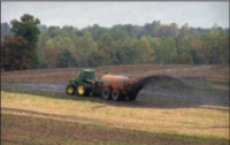
- Agriculture and Food (Sierra Club)
- Buyer Beware . . . Not all composts are safe! (Sierra Club - printable postcard)
- Sludge Brochure (Olympic Environmental Council)
- Sludge Facts.org
- United Sludge-Free Alliance
- Public Hearing on sewage sludge. Caroline Snyder. Aug 29, 2016
3. COLUMBIA-SNAKE RIVER SALMON RECOVERY CAMPAIGN (Contact: Bill Arthur billwarthur@gmail.com)
The Columbia and Snake Rivers were once the greatest salmon rivers in the world until four dams were built on the lower Snake River. Wild salmon bring nutrients from the briny ocean back to the high mountain streams. They create an environment that help steelhead, pacific lamprey and other fish thrive. They are also a critical food source for endangered orcas. However dams block salmon from returning to their birthplace to spawn, reproduce and thrive.
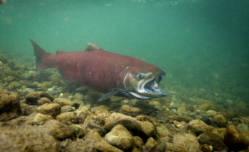
Link: Columbia-Snake River Salmon Recovery Campaign
4. YAKIMA RIVER FUTURE PROJECT (Contact: Elaine Packard espackard@msn.com)
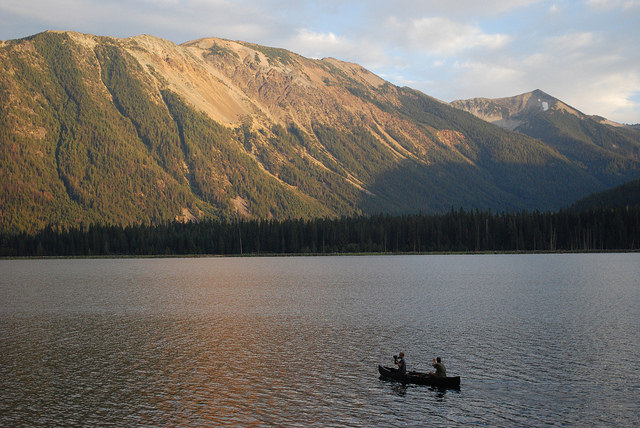
Water waste by irrigators in the Yakima Basin is driving plans for new irrigation insurance dams, including a Bumping Lake dam that would destroy ancient forests. Sierra Club is committed to water supply solutions and fish passage that involve common-sense water management.
We belive that enduring solutions to Yakima Basin water scarcity - especially in the face of climate change - will be found with:
- aggressive water conservation,
- adoption of water efficiency standards and metering,
- water markets,
- low-impact storage projects (e.g., aquifer storage and recovery), and forest and floodplain restoration, and other strategies to promote natural water storage.
Links:
- Yakima Water Future (Sierra Club)
- Yakima Water Library
Photo: Bumping Lake, evening canoe. Karl Forsgaard photo.
5. COLUMBIA RIVER FUTURE (Contact: John Osborn john@waterplanet.ws)
The historic, massive hydrologic re-engineering of the Columbia River via dams and irrigation projects transformed one of the world's great salmon rivers into what historian Richard White has described as "the organic machine.” In 2006 Washington State enacted a new law to "aggressively pursue" new dams and other water projects, unleashing a small army of dam planners in the state's part of the Columbia River watershed: the Office of Columbia River in the Dept of Ecology.
Starting in 2007 in response to the latest onslaught of new dam proposals in eastern Washington, Sierra Club has undertaken the Columbia River Future Project, advocating for sensible and affordable solutions to water scarcity in this time of climate change.
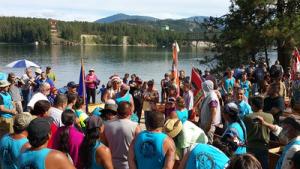
Current conservation advocacy for the Columbia River and its tributaries include:
- Modernizing the Columbia River Treaty
- Treaty Round Table
- Ethics & Treaty Project
- Spokane River
- Similkameen River (and removing Enloe Dam)
Supporting the Palouse Group and Family Farmers in protecting drinking-water Aquifers
Photo: Tribes gathering at Kettle Falls site John Osborn photo
Environmental Fact Sheets, Issues, And Alerts
Field Trip To The Chehalis River
Olympic Coast National Marine Sanctuary:
https://olympiccoast.noaa.gov/
River Runner: a fun interactive map
Drop rain anywhere in the world and see where it ends up. 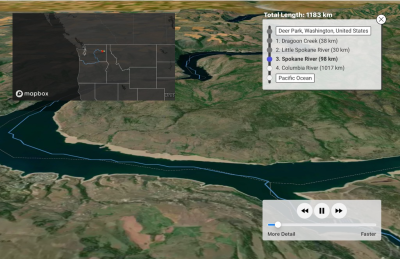
Click and drop a raindrop
https://river-runner-global.samlearner.com
Salmon at the Crossroads: Time is Running Out: We can change the course and put Washington on a path to recovery that recognizes salmon and other natural resources as vital to state's economy. For the Salmon Recovery Executive Summary and complete data on the State of Salmon in Watersheds 2020, visit stateofsalmon.wa.gov
Bottled Water, Learning the Facts and Taking Action ( Contact Rebecca Wolfe: rr.wolfe@comcast.net). Click for printable Brochure (pdf)
Elwha River Restoration: For the latest Elwha news, including photos, project updates and ‘countdown’ events, visit the National Park Service site or interact with ‘Elwha River Restoration’ on Facebook.
Healthy Watersheds: The Washington Department of Ecology has published a report titled "Working for Washington's Future: Healthy Watersheds, Healthy People" (PDF) that provides valuable information our watersheds and their relationship to our health
Stormwater in Seattle: Storm water discharges are generated by runoff from land and impervious areas such as paved streets, parking lots, and building rooftops during rainfall and snow events that often contain pollutants in quantities that could adversely affect water quality. For more information and a quiz to test your knowledge, go to Stormwater Services and Information.
Committee Officers
Elaine Packard, Chair (espackard@msn.com)
Genia Moncada, Webmaster (genia206@gmail.com)